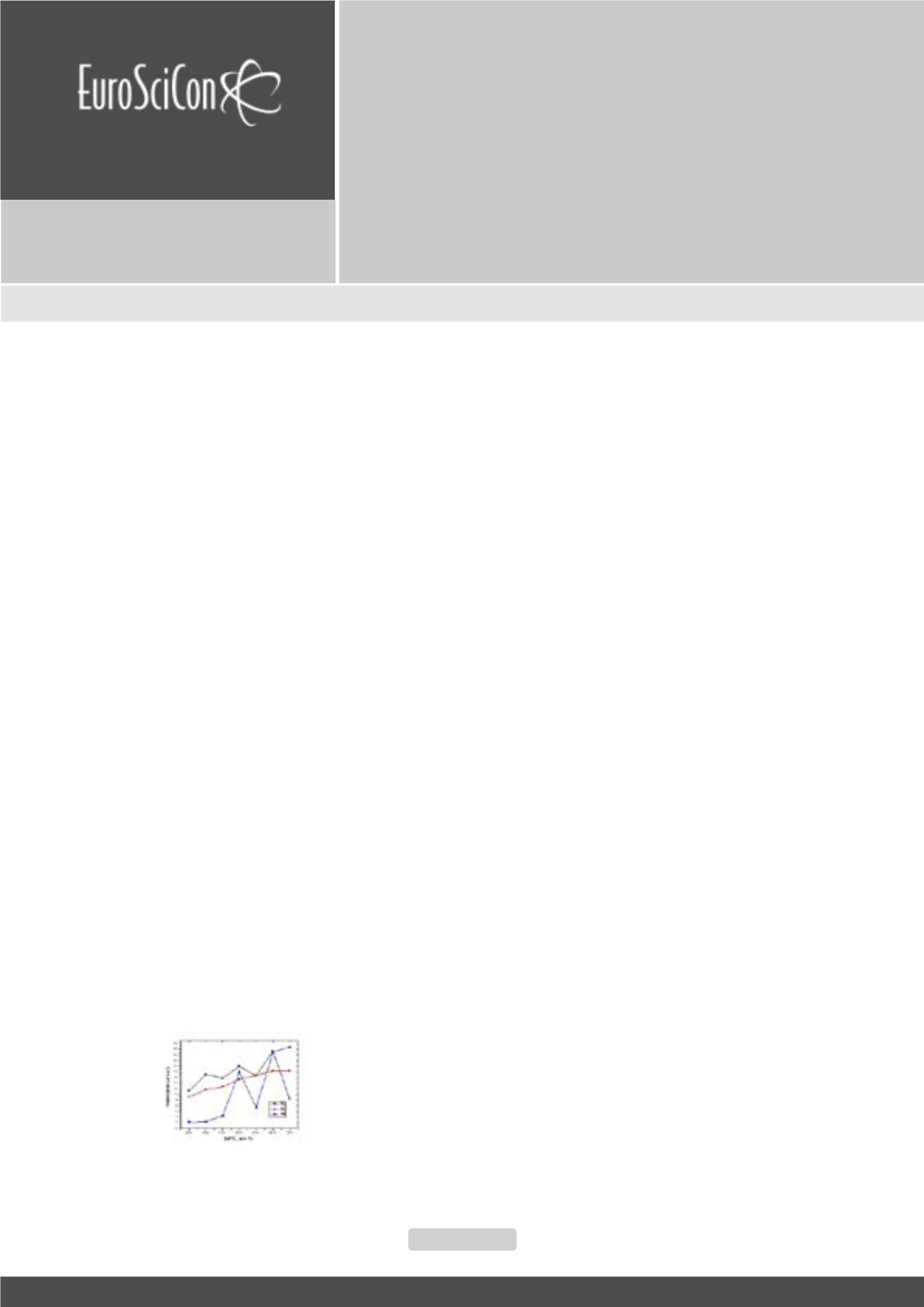

NanoMat 2018
Nano Research & Applications
ISSN: 2471-9838
Page 33
April 26-27, 2018
Rome, Italy
17
th
Edition of International Conference on
Emerging Trends in
Materials Science and
Nanotechnology
T
he ABO3 perovskites are nowadays considered as the best
candidates for highly reliable electronic devices thanks
to their multifunctional properties. Most of the time, these
ternary oxides can combine at least two different physical
properties. Barium Titanate (BaTiO
3
) is a typical ferroelectric
in its tetragonal phase with a spontaneous polarization at
the bulk scale. Barium Zirconate (BaZrO
3
) is stable in a cubic
structure and is widely used as substrate for other perovskites.
The lattice mismatch is an important parameter for stacking
two different perovskites. For BaTiO
3
/BaZrO
3
superlattices,
the lattice mismatch of induced important structural and
electronic modifications at nanoscopic scale. Few experimental
works were conducted on [BaTiO
3
]
m
/[BaZrO
3
]
n
superlattices
with modulation period Λ=(n+m)ã = 3.2 , 4.8 , 6.4 et 8 nm (ã
is the mean lattice parameter in the transverse direction to the
substrate). Hysteresis loops measurements show that the out
of plane polarization increases with the modulation period (Λ).
However these experimental studies were restricted to high
modulation period and no results were available on very short
modulation period of these superlattices. In this theoretical
study, we investigated [BaTiO
3
]m/[BaZrO
3
]n systems with n and
m varying from 1 to 3 to predict their structural and electronic
modifications with respect to n/m and different symmetries
(
P4mmm, P4mm, Pmm2, Pm, P1
). For this purpose, ABINIT code
based on density functional theory (DFT) and plane waves (PW)
basis is used for our
ab initio
calculations. Our results show that
the P1 symmetry with three dimensional polarizations is the
most stable for all the studied modulation periods. Our finding
can be useful for tuning ferroelectric devices.
Figure 1:
In-place (Px and Py) and out of plane Pz Polarizations for the most
stable P1 symmetry of [BaTiO
3
]m/[BaZrO
3
]n superlattices.
Recent Publications
1. N Iles, A Kellou, K Driss Khodja, B Amrani, F Lemoigno,
D Bourbi and H Aourag (2007) Atomistic study of
structural, elastic, electronic and thermal properties of
perovskites Ba(Ti,Zr,Nb)O
3
. Computational Materials
Science 39:896-902.
2. T Belaroussi, B Amrani, T Benmessabih, N Iles and
F Hamdache (2008) Structural and thermodynamic
properties of antiperovskite SbNMg
3
. Computational
Materials Science 43:938-942.
3. N Iles, F Finocchi and K Driss Khodja (2010)
A systematic study of ideal and double layer
reconstructions of ABO3 (001) surfaces (A=Sr, Ba
and B=Ti, Zr). Journal of Physics: Condensed Matter
22(30):305001.
4. N Iles, K Driss Khodja, A Kellou and P Aubert (2014)
Surface structure and polarization of cubic and
tetragonal BaTiO
3
: An
ab initio
study. Computational
Materials Science 87:123-128.
5. Imène Cherair, Nadia Iles, Lyacine Rabahi and
Abdelhafid Kellou (2017) Effects of Fe substitution by
Nb on physical properties of BaFeO3: A DFT+U study.
Computational Materials Science 126:491–502.
Biography
Nadia Iles has finished her PhD studies in 2010, devoted at the same time to
teaching and research at Oran 1 University and Oran’s High School of Elec-
trical Engineering and Energetics. She is interested in computing physics
of low dimensional systems based on perovskites materials. She has pub-
lished more than seven international and national research papers. She has
participated in oral and poster presentations in more than 16 international,
national conferences and in seminars. She is supervising more than five
Master’s and Doctoral thesis. She is a Member of numerous national and
international projects such as PHC TASSILI (CMEP) with European funding,
CNEPU and PNR with national funding.
n_ilesdz@yahoo.frTuning ferroelectricity in [BaTiO
3
]m/[BaZrO
3
]n superlattices: an
ab initio study
Nadia Iles, Ilham Kara
and
Kouider Driss Khodja
University of Oran, ESGEE, Algeria
Nadia Iles et al., Nano Res Appl, Volume:4
DOI: 10.21767/2471-9838-C1-008
















